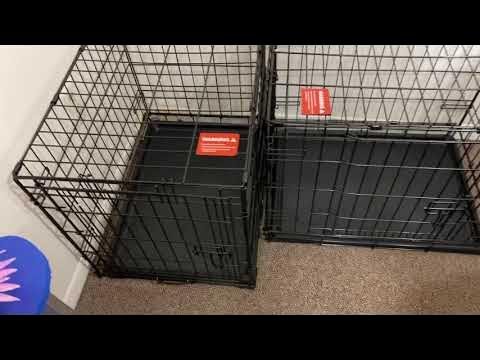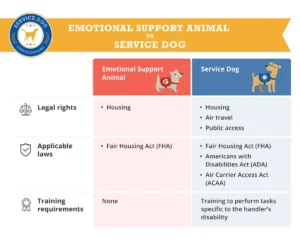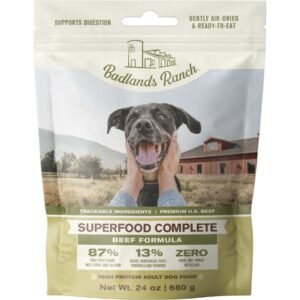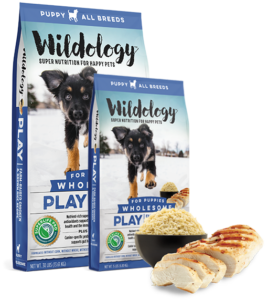Can you put two dog crates next to each other? Yes, you can.
Many dog owners wonder if this setup is safe and practical. Having two dogs can be a joy, but it also comes with challenges. Crating is often necessary for training and safety. Placing two crates side by side is common, but it raises some questions.
Will the dogs feel comfortable? Could they distract each other? Understanding your dogs’ needs is key. Each pet has its own personality and space requirements. This blog will explore the pros and cons of placing dog crates next to each other. We will also share tips to ensure your dogs feel secure and happy. Let’s dive in and find the best setup for your furry friends!
Table of Contents
Introduction To Dual Dog Crating
Many pet owners face the question: Can you put two dog crates next to each other? This is often a practical solution for families with multiple dogs. Dual dog crating can help create a safe and cozy space for each pet. It also allows for easy supervision. Understanding the benefits and concerns can help you decide the best setup for your furry friends.
Benefits Of Side-by-side Crating
Placing two dog crates next to each other has several advantages:
- Social Interaction: Dogs can see and hear each other. This can reduce anxiety.
- Space Efficiency: Saves room in your home. No need for extra space.
- Comfort: Dogs feel secure with a buddy nearby. It can be less lonely.
- Easy Training: Crating can help with house training. Dogs learn from each other.
Common Concerns With Multiple Dog Crates
While there are benefits, there are also some common concerns:
- Resource Guarding: Dogs may guard their space or toys.
- Distraction: One dog may distract the other. This can lead to barking.
- Space Issues: Crates must be large enough for both dogs. Comfort is key.
- Individual Needs: Each dog has different needs. One may need more space.
Understanding these concerns helps in making the right choice. Monitor your dogs’ behavior closely. Adjust the setup if needed. Always prioritize their comfort and safety.
Choosing The Right Crates
Choosing the right dog crates is essential for your pets. Proper crates ensure comfort and safety. Here, we focus on two main aspects: size and materials.
Size And Comfort Considerations
Size matters when selecting dog crates. A crate should be big enough for your dog to stand, turn, and lie down comfortably.
- Small breeds need smaller crates.
- Large breeds require spacious crates.
Measure your dog’s height and length. Use these measurements to find the ideal crate size. Remember, a cramped space can cause anxiety.
Comfort is also important. Look for crates with soft bedding. This helps your dog feel at ease.
Material And Durability Factors
Different materials impact durability and comfort. Here are common types:
| Material | Durability | Comfort |
|---|---|---|
| Wire | High | Moderate |
| Plastic | Moderate | High |
| Fabric | Low | High |
Wire crates are strong and provide good ventilation. Plastic crates offer more privacy and warmth. Fabric crates are lightweight and portable.
Choose a material that fits your dog’s needs. Ensure it can withstand your dog’s energy and behavior.
Space Optimization
Maximizing space is key for pet owners. When using two dog crates, it’s essential to think about the area available. Proper space management can make your home comfortable for you and your pets.
Measuring Your Available Area
Start by measuring the space where you plan to place the crates. Follow these steps:
- Use a tape measure to find the width and length.
- Note any obstacles, like furniture or doors.
- Calculate the total area available for the crates.
Knowing the dimensions helps you choose the right crates. Crates should fit well without crowding the area.
Arrangement Tips For Small Spaces
Placing two crates in a small area needs careful planning. Here are some tips:
- Choose compact crates that fit together.
- Position crates side by side for easy access.
- Use a divider to create a shared space for both pets.
- Place crates against a wall to save floor space.
Consider the layout of your room. Crates shouldn’t block pathways. Keep the area open and easy to navigate.
| Crate Size | Recommended Area (sq ft) |
|---|---|
| Small (24″x18″) | 2-4 |
| Medium (30″x21″) | 4-6 |
| Large (36″x24″) | 6-8 |
Choose crate sizes that fit your space well. A little planning goes a long way.
Safety First
Safety is vital when placing two dog crates next to each other. Crates must be secure and comfortable for your pets. Proper setup helps avoid accidents and ensures a peaceful environment.
Securing Crates To Prevent Accidents
Securing the crates is essential. Unstable crates can tip over. Here are some tips:
- Choose sturdy crates: Select heavy-duty materials.
- Use non-slip mats: Place mats under crates for stability.
- Anchor crates: Use straps to secure them together.
Check the crates regularly. Look for any signs of wear or damage. This helps keep your pets safe.
Ensuring Proper Ventilation
Good air circulation is crucial. Proper ventilation keeps your pets comfortable. Here’s how to ensure it:
- Leave space between crates: A few inches allow airflow.
- Open doors: Keep doors open when not in use.
- Monitor temperature: Ensure the area is cool and dry.
Check on your pets often. Ensure they are not too hot or cold. Keeping them comfortable is key to their well-being.
Behavioral Aspects
Understanding the behavioral aspects of dogs is key. Dogs are social animals. Their behavior can change based on their environment. Placing two dog crates next to each other can impact their interactions. This section explores how to manage their dynamics and train them effectively.
Managing Inter-crate Dynamics
When two crates are next to each other, dogs may react differently. Each dog’s crate should be their safe space. Here are some tips for managing their behavior:
- Observe Body Language: Watch for signs of stress or aggression.
- Maintain Distance: If one dog is anxious, consider spacing the crates.
- Separate Play Areas: Avoid conflicts by creating separate play zones.
Inter-crate dynamics can improve with time. Dogs may adjust to each other’s presence. Monitor their interactions closely.
Crate Training For Two Dogs
Effective crate training helps dogs feel secure. Start training each dog separately. Here’s how:
- Introduce the Crate: Allow each dog to explore their crate.
- Use Positive Reinforcement: Reward them for entering their crate.
- Gradually Increase Time: Start with short periods and extend them.
- Feed in Crates: This creates a positive association.
Once both dogs are comfortable, place the crates next to each other. Monitor their behavior during this transition. Adjust as needed. Successful crate training promotes a peaceful environment for both dogs.
Credit: www.reddit.com
Privacy And Stress Reduction
Dogs need their own space. Privacy helps them feel safe. Stress can happen when dogs are too close. They may bark or act out. Placing two crates next to each other can create issues. Finding a balance is important for their well-being.
Creating Individual Safe Havens
Each dog deserves a safe haven. Crates provide that comfort. Here are some tips:
- Choose separate crates for each dog.
- Make sure each crate is cozy and inviting.
- Use different bedding or toys for each dog.
Individual spaces help reduce tension. Dogs can relax without distractions. This setup promotes a peaceful environment.
Using Barriers And Dividers
Dividers can help when placing crates next to each other. They create a sense of separation. Here are some options:
| Type of Divider | Description |
|---|---|
| Fabric Divider | Soft and easy to install. Blocks direct view. |
| Wire Grids | Sturdy and allows airflow. Keeps dogs separated. |
| Wooden Panels | Durable and provides complete privacy. |
Using barriers can help dogs feel secure. They can rest without feeling crowded. Stress levels go down with proper separation.
Cleaning And Maintenance
Keeping dog crates clean is very important. It helps your pets stay healthy. Regular cleaning also prevents bad odors. When placing two dog crates next to each other, consider the cleaning process. You want it to be easy and effective.
Simplifying Your Cleaning Routine
Here are some tips to make cleaning easier:
- Use removable liners for easy washing.
- Choose crates with smooth surfaces. They are easier to wipe down.
- Place both crates in a well-ventilated area. This helps dry them faster.
Consider using a vacuum with a pet hair attachment. This tool works well for cleaning around the crates.
Hygiene Best Practices
Follow these best practices for maintaining hygiene:
- Clean the crates at least once a week.
- Use a mild soap mixed with warm water.
- Rinse well to remove all soap residue.
- Dry the crates completely before placing your pets inside.
Check for any signs of damage. Repair or replace damaged crates. Keeping them safe is key.
Make sure to check for any signs of pests. Clean spills quickly to prevent issues.

Credit: shophiddin.com
Accessories And Customization
Making your dog’s crate cozy and unique enhances their comfort. Personalizing each crate can help your dogs feel safe. Below are some ideas for accessories and customization.
Comfort Enhancements
Comfort is key for happy dogs. Here are some accessories to consider:
- Soft bedding: Use a thick, comfortable bed.
- Cushions: Add cushions for extra comfort.
- Covers: Use crate covers for warmth and privacy.
- Toys: Include a few toys to keep them busy.
These items make the crate inviting. Happy dogs are calm dogs.
Personalizing Crates For Each Dog
Each dog has its own personality. Personalizing their crates shows you care. Here are some ways to do it:
- Name tags: Place name tags on each crate.
- Unique colors: Choose different colors for each crate.
- Photo frames: Add frames with pictures of your dogs.
- Custom blankets: Use blankets with their names or favorite colors.
Personal touches make each dog feel special. This helps them connect with their space.
| Accessory | Benefit |
|---|---|
| Soft bedding | Provides comfort and warmth. |
| Cushions | Offers extra support. |
| Crate covers | Creates a cozy, den-like feel. |
| Toys | Keeps dogs entertained. |
Accessories and personalization create a safe haven for your pets. They enjoy their time in the crate. Happy dogs lead to a harmonious home.
Real-life Examples
Understanding how dog owners manage two crates can help. Here are some real-life examples of dog owners who have placed two dog crates next to each other. Their experiences can guide you in making the right choice.
Case Studies Of Side-by-side Crating
Many dog owners share positive stories about using two crates. They found that placing them side by side works well for their pets. Here are a few cases:
| Owner | Dogs | Crate Setup | Outcome |
|---|---|---|---|
| Sarah | 2 Beagles | Wooden dividers between crates | Reduced anxiety during crate time |
| Mike | 2 Labradors | Same size crates, open door | Increased comfort and bonding |
| Lisa | 1 Golden Retriever, 1 Poodle | Crates against the wall | Less barking, better sleep |
Testimonials From Dog Owners
Dog owners appreciate the benefits of side-by-side crating. Here are some testimonials:
- James: “My dogs are calmer together. They comfort each other.”
- Emily: “Crating them side by side reduced their separation anxiety.”
- Tom: “They enjoy each other’s company during crate time.”
- Rachel: “I love seeing them relax next to each other.”
These real-life examples show the benefits of placing two dog crates next to each other. Each owner’s experience highlights comfort and reduced anxiety for their pets.
Making The Decision
Choosing whether to place two dog crates next to each other requires careful thought. Your dogs’ comfort and safety matter. Each dog has different needs. Understanding these needs helps you decide.
Assessing Your Dogs’ Needs
Each dog is unique. Consider their personality, age, and behavior. Here are some factors to think about:
- Temperament: Is your dog calm or anxious?
- Age: Puppies may need more space.
- Socialization: Do your dogs get along well?
- Size: Large dogs need larger crates.
Observe how your dogs interact. Do they prefer close company or enjoy their own space? This will guide your decision.
When To Consider Separate Spaces
Sometimes, separate crates are best. Here are reasons to choose separate spaces:
- Fight Risk: If your dogs have conflicts, separate crates are safer.
- Stress Levels: An anxious dog may need solitude to relax.
- Training Needs: Some dogs require special training or focus.
- Health Issues: A dog recovering from surgery may need quiet.
Separate crates can reduce stress. They can also provide a safe space for each dog. Always prioritize your dogs’ well-being.
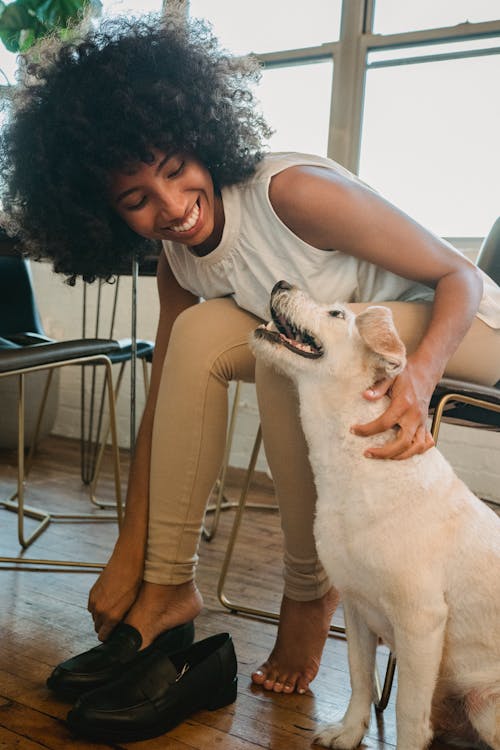
Credit: www.pexels.com
Frequently Asked Questions
Can Dogs Share A Crate Safely?
Dogs can share a crate if they get along well. However, it’s essential to consider their size and temperament. If they are compatible, a larger crate can work. Always monitor their behavior to prevent any territorial disputes or stress.
What If My Dogs Fight In Adjacent Crates?
If your dogs fight while in adjacent crates, separate them immediately. Fighting can cause stress and anxiety. Ensure each dog has its own space to feel secure. Reinforce positive interactions and gradually reintroduce them, focusing on calm behavior.
How Far Apart Should Dog Crates Be?
Dog crates should be placed a few feet apart if they are next to each other. This distance helps prevent stress and territorial behavior. Ensure each crate has enough space for the dog to move comfortably. Monitor their interactions to ensure they remain calm.
Can I Use Double Dog Crates?
Yes, double dog crates are available and can be used. They provide a shared space for compatible dogs. Ensure the crate is large enough for both dogs. Monitor their interactions closely to ensure they feel safe and comfortable together.
Conclusion
Placing two dog crates next to each other is possible. Think about your dogs’ needs first. Each dog should have enough space to move. Ensure they feel safe and comfortable. Monitor their behavior to avoid stress. If they seem anxious, separate the crates.
A little planning can make a big difference. Create a calm environment for both dogs. With the right setup, your dogs can thrive together. Enjoy watching them feel secure in their shared space.
